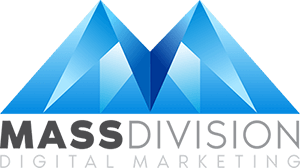PPC Case Study for Products and Services
Goal: Fix an Ad campaign that was previously set up and not performing to client’s expectations.
Overview: We took a client’s account over and started fresh. His previous agency set up his campaigns and left them with little to no optimizations, an incomplete conversion tracking setup, and poor performing ads that were not specific to his products and services. In addition to all of this, the ads targeted the homepage which did not provide the solution searchers were looking for and lowered the campaign’s quality score.
We are going to show what proper setup and management of a Google Ads campaign can do.

Background
The client was sold services with another digital marketing agency and worked with them for nearly a year. He thought “this is just how google ads are” and was accepting the poor performance as the cost of doing business online. The other agency quickly set up his campaign, not using google’s best practices and not paying attention to details that would affect the performance of the campaign down the road. They left it to run and failed to provide the client with much detail on its performance.
After some time, the client decided he would give another agency a try, and he contacted Mass Division. We looked at the account, his campaigns, and made the suggestion that we start over with a fresh campaign and updated tracking and the client agreed.
The Audit
Google Ads is one of the leading advertising platforms and also one of the most complexes. Google’s primary goal is to get as much money from you as possible while offering no promise of any return on investment. However, that is where professionals like Mass Division come into the picture. Google Ads is a tool and it is worth hiring someone who knows how to get the most out of it.
We started by performing an account audit. We have performed many of these audits at Mass Division and have created a checklist to work through the account.
- We look at current data for trends and insights. What has worked and what has not?
- We look for mistakes in the account that can lead to poor conversions.
Almost 100% of the time we find opportunities where there were mistakes made during set up of the account, campaign, or conversion tracking. And in this case, we needed to start from the ground up.
Below is the data from the last month of the campaign under the previous marketing company.
Cost: $1400 Per Month
Conversion Rate: 0.46%
Conversions: 12
Cost Per Lead: $115.00
The Work
Keywords
Some of the keywords were good, but many were not relevant leading to a lot of wasted clicks and spend. Too many broad keywords that were soaking up most of the budget and leaving very little for keywords that might be considered deeper funnel. We were able to reuse a few keywords, as they had sufficient data to show that there were conversions being made in association with them.
We did our research using our own keyword tools as well as Google’s Keyword Planner and created a “keyword list for success”. We found many keywords that were lower funnel, meaning they were keywords people searched when they were closer to taking that final step to making their purchase. We organized the keywords into groups of related keywords to help to formulate our ad group structure.
There was no negative targeting list, so using the previous data we were able to formulate one to start with. This helps to further eliminate irrelevant searches and ensure that we are driving ads to the right people while reducing wasted ad spend.
Ads
In Google Ads, ad groups have their own sets of keywords that are relevant to a set of ads. It is part of the best practices to divide up your keywords and make multiple ad groups based on the different products and services you are offering.
For example: If you have various items of clothing that you want to sell, you could make an ad group for shoes, one for shirts, one for pants, and another for hats. If you wanted to get really granular, you could make a campaign just for shoes and make an ad group for each individual color, brand, type of shoe, and within that ad group, you would have related keywords and ads that support those keywords.
If a very generic ad is presented on a search. For example, an ad for “clothes” when the search was for a specific item such as “shoes”. The Click Through Rate will be quite low. As a result, the cost of running that ad will be high due to the low relevance score.
When we did our evaluation of the previous campaign, we found very generic broad ads with low relevancy and click through rates. They did not offer the searcher a solution they were looking for and as a result, the ads were not shown much.
We created new ads from the ground up. Fresh headlines that supported the keywords in each ad group. Descriptions that included seed keywords that helped to bring the searcher closer to clicking.
Extensions
There were no extensions on this account, so there was ample opportunity to improve here. There were no site link extensions, no call out extensions, no structured snippets, and the location extension was not integrated. We added any and all extensions that made sense for this business.
Sitelinks are great for offering a searcher more links to your website that may offer the solution they are looking for. Callout Extensions can highlight things about your business that you want to bring attention to. Structured Snippets provide insights into your products, offerings, and more. Location Extensions tie your business to Google My Business and provides your ads with an address, phone number, and a map marker along with the opportunity to show ads on the map listings.
All of these not only help your ads perform better, they also increase the real estate of your ad which is a good thing. Making your ad bigger means it gets more attention and offering more information means there is more opportunity for a click.
Conversion Tracking
The previous conversion tracking was present but there was a lot of opportunity for improvement. Tracking with Google Ads is simple. Deciding your action and adding a bit of code into your page’s header. There are often multiple actions a customer can take once they come through your ad to your page. They can make a purchase, they could make a call, or they could put in an inquiry form. All of these actions are valuable in their own way and they are all worth tracking.
Tracking is not only good for understanding what actions people are taking after clicking on an ad, but it also gives Google valuable data about the type of individual who is completing the action and aids in helping to drive more of those types of people to your campaign. This is part of the machine learning component of your ads campaign. Think of this as positive reinforcement for Google’s complex algorithms.
Targeting
The targeting of the original campaign was basic. It targeted the city the business was located in. That is fine, but you end up missing some of the surrounding areas that the business may be close to and people are often willing to travel a little to obtain the product and service they desire.
For this client, we build out a radius around his business starting with a 10-mile radius around his location, and using 10-mile increments we increased outward to 30 miles. This ended up being the perfect radius for his business as later when we tried to expand further, we found that 40 miles were a little too far for people to travel.
The Results
Cost: $10,800 Per Month
Conversion Rate: 8.4%
Conversions: 2,230
Cost Per Lead: $4.84
Conclusion
The client was beyond pleased with the result of his new campaign. He immediately increased the budget month after month until he reached a point where he was busy but his business was not overcapacity for its ability to support all the new customers.
We were able to reduce the client’s cost per customer on average by 97% making Google Ads a very affordable method to advertise but also keeping his advertising ROI positive. This was all accomplished by using data to select the proper keywords, understanding how to write highly converting ad copy, placing a negative keyword list in place, adjusting the campaign targeting, implementing more complex tracking, and making regular optimizations to continuously improve the campaign’s performance.
Now you may be thinking, this is great. But can we do this for you as well? Why not send us an email and let’s talk. At Mass Division we want to make you stand out against the masses!


